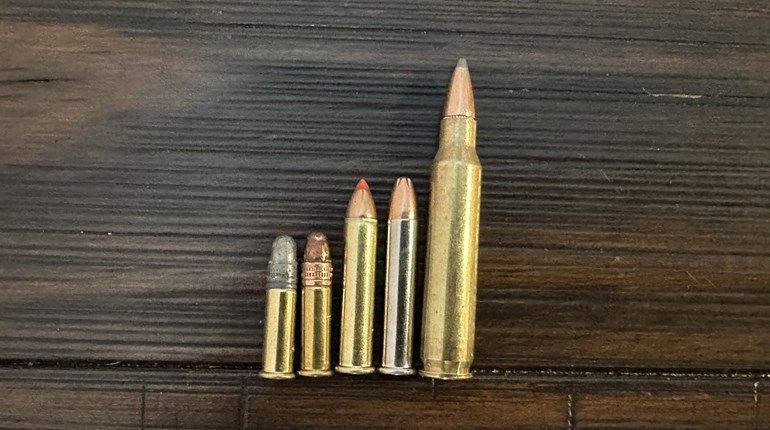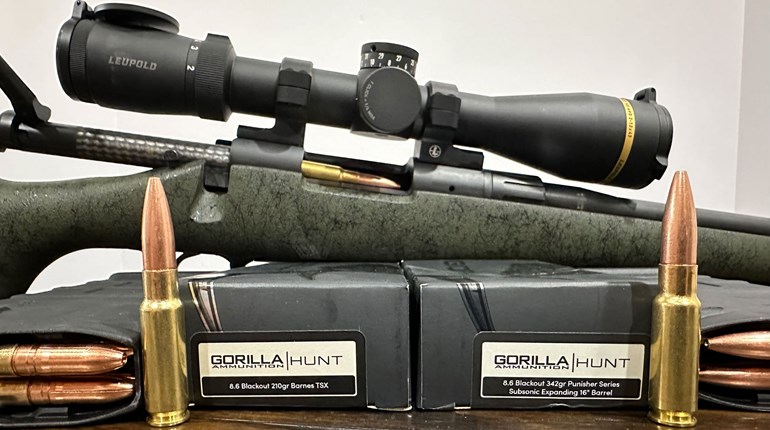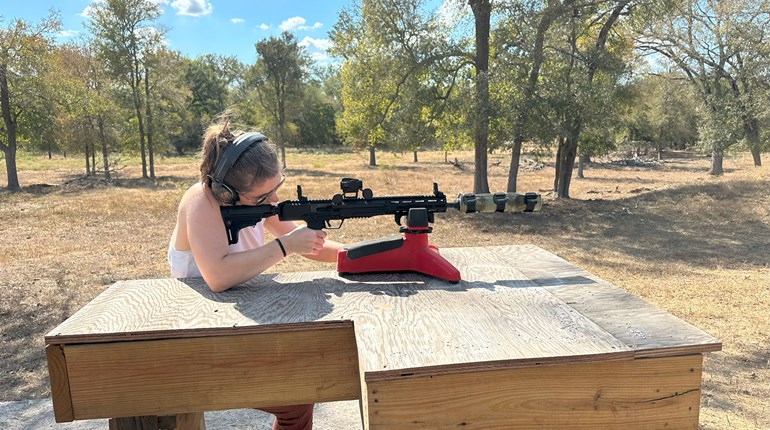
Unless you’ve been living under a rock for the past decade and a half, you’ve probably heard about the .300 Blackout (abbreviated as BLK), a cartridge that’s essentially a 5.56 case necked up to hold .30-caliber bullets. Launched in 2009 by Advanced Armament Co. (AAC; this is important later) as an alternative to the 5.56 NATO round, the .300 BLK runs great through standard AR-15s with no change necessary other than the barrel – it even feeds from standard magazines without limiting any capacity. Plus, the round is incredibly suppressor-friendly.
A decade and change later, Kevin Brittingham – who helped kickstart AAC and the .300 BLK cartridge – has pushed the envelope again, replicating his ballistic magic to the AR-10 platform with the 8.6 BLK. And this time, there's a very unique twist.
A New Spin on Twist Rate
A bigger bullet doing similar tasks as the .300 BLK isn’t the only thing that makes the 8.6 BLK special, though that is something the BLK family has going for it. Both rounds function incredibly well at both sub-sonic and super-sonic speeds. The 8.6 BLK's design does something revolutionary: It operates using a 1:3 twist. For those not in the know, twist rate is essentially what spins a bullet, similar to throwing a spiral in football.
Long, heavy bullets, like those used for subsonic purposes, need tight twist rates (the smaller the second number, like 1:3 compared to something like a 1:10 twist rate, means that the bullet will be spun faster to help stabilize the projectile). This tight twist keeps the bullet stable as it travels through the air, preventing it from tumbling, thus making it more accurate over distance – and in the 8.6 BLK’s case, more lethal. It also requires less velocity to perform on impact. This is crucial when shooting bullets that move slowly, to ensure proper bullet performance, because most bullets need velocity to force them to open.
The problem is, when trying to shoot a bullet suppressed, slow speeds are necessary to get true subsonic velocities. That's the "sub" part of "subsonic," which allow bullets to be shot as intended through suppressors and keep things quiet. For reference, up until the 8.6 BLK arrived on the scene, a really “fast” twist rate was a 1:8, like that found used in most 6.5 Creedmoor barrels, or even a 1:7, like those found in match AR-15 barrels chambered in 5.56 NATO to shoot heavy bullets.
8.6 BLK’s Dark Side
I will admit, there is a potential downside to using a super-tight twist rate like what’s found in the 8.6 BLK. Because bullets are spinning so fast, they need to be made of solid copper, otherwise the jacket can get ripped off the lead core ... and if you didn’t know, this isn’t good. This phenomenon is called “jacket core separation,” and it’s exactly what it sounds like: The copper outside of the bullet physically tears away from the core – the bullet’s inside, which is typically lead – and the two become separated, obviously compromising the structural integrity of the bullet. This in turn compromises the performance of the bullet overall.
Normally, this happens on impact. Those rounds are spinning at roughly half a million RPMs, making it much easier for the bullets to tear themselves apart, even at much slower speeds. If you're hunting, that's a problem. Hunters using 8.6 BLK need well-constructed, solid-copper bullets, like those from Barnes or certain bullets from Hornady or Nosler. Unless you're just shooting at targets, they’re almost a requirement for the 8.6 BLK.
There is a benefit to this blender of bullet performance though, and it’s that these bullets cause significantly more damage upon impact due to the rotational velocity and energy exerted outward because of the high rate of spin. Plus, since the spin encourages bullets opening, even at slower speeds, the 8.6 BLK cartridge also does well from shorter barrels. In fact, Faxon Firearms’ load data for the cartridge lists 16" barrels as the longest barrel tested for the load data, and it’s the longest barrel Faxon sells that’s chambered in the 8.6 BLK cartridge.
New Round, New Ammo
The other downside to the 8.6 BLK – and any new round, really – is ammo availability. Yes, handloading makes shooting new cartridges significantly easier – both in availability and on the wallet. But what if you’re not set up to handload? Thankfully, ammo can be sourced from a few different manufacturers, and because the round is picking up steam, it may likely be found from more common vendors in the future. Gorilla Ammo and Fort Scott Munitions are the two big players in the 8.6 BLK ammo market right now; I tested some Gorilla Ammo from 16" bolt-action rifle chambered in 8.6 BLK, and I got the following results: 2,116 fps from the 210-grain Barnes load Gorilla offers, and just over 1,000 fps using the subsonic load featuring a 342-grain bullet.
For those who reload, 6.5 Creedmoor brass can be trimmed down to the shoulder (basically trim the neck off), and then resized. Word of caution: This method isn’t easy (ask me how I know… though the Hornady case prep center made it exponentially easier). Your best bet is to buy some factory ammo, shoot it, and save the cases to reload later. That, and have some solid-copper bullets in .338 caliber on hand.
Is the 8.6 BLK Right for You?
Rarely will I pose this question, as most of the time, ammo and rifle/pistol availability is common enough, and even a cartridge which is somewhat unknown to the shooting world still has enough of a following that it can be bought and shot relatively easily. In the case of the 8.6 BLK, however, I pose this question because as of right now, though it’s gaining popularity due to its unique capabilities, it may not be the best time to jump in headfirst. However, if niche cartridges are your jam, by all means, go for it, as I’m sure it won’t leave you disappointed!







































